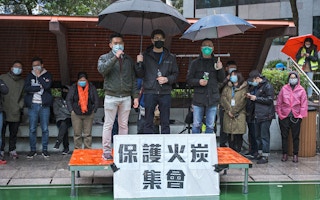As the Chinese city of Wuhan, the epicentre of the new coronavirus, becomes the latest urban centre to face a deadly disease outbreak, city planners and physicians say such densely packed hubs are particularly vulnerable and may need a redesign.
Wuhan, a city of about 11 million, has been under virtual lockdown for over three weeks. More than 1,400 people on the mainland have died, according to authorities.
The outbreak has brought to mind another deadly epidemic, SARS, or Severe Acute Respiratory Syndrome, which killed more than 770 people between 2002 and 2003.
That disease’s epicentre was a housing estate in Hong Kong, amongst the most densely populated and unequal cities in the world.
With more than two-thirds of the global population forecast to live in urban areas by 2050, cities need to be designed for good health, said Sreeja Nair, a policy researcher at the Lee Kuan Yew Centre for Innovative Cities (LKYCIC) in Singapore.
“While urban living offers prospects of better economic opportunities and infrastructure, including healthcare facilities, the way cities densify and expand plays a huge role in the spread of infectious diseases,” she said.
Wealth inequality in cities also affects their vulnerability and capacity in terms of preparedness and response, Nair told the Thomson Reuters Foundation.
“This skew on account of socio-economic disparities and governance puts some parts of the population at higher risk,” including those lacking access to proper housing, healthcare and basic utilities such as water and sanitation, she said.
“
While urban living offers prospects of better economic opportunities and infrastructure, including healthcare facilities, the way cities densify and expand plays a huge role in the spread of infectious diseases.
Sreeja Nair, policy researcher, Lee Kuan Yew Centre for Innovative Cities
Cities have long been magnets for people seeking economic opportunities and a better quality of life.
But these areas with people living in close proximity have also enabled the fast spread of disease, from bubonic plague in the Middle Ages to bird flu, SARS and the novel coronavirus.
Although urban residents generally have better health than rural populations, the risks are distributed unequally, with most of the burden falling on vulnerable segments such as slum dwellers, according to the World Health Organization (WHO).
Human behaviour
The WHO has identified urbanisation as one of the key challenges for public health in the 21st century, even as it notes municipal agencies often implement health policies first and act more quickly than federal bodies in emergencies.
The urban environment is linked to a large number of noncommunicable diseases such as obesity, heart disease and pulmonary disease, as well as communicable diseases such as tuberculosis from crowding and poor ventilation, and waterborne and vector-borne diseases such as dengue, according to the WHO.
Urban areas also have more points of risk because of contact between humans and animals, said David Heymann, a professor at the London School of Hygiene and Tropical Medicine.
That includes areas with rodents, live domestic and wild animal markets, and suburban areas where animals are raised in industrial agricultural facilities, said Heymann, a former executive director at WHO where he led the response to SARS.
“Urban areas are unique and must develop solutions in addition to strong disease detection and response systems to rapidly control emerging infections,” he said.
The proliferation of drug-resistant infections and the myriad methods of transmission can overwhelm even the cleanest and wealthiest of cities.
Singapore, among the world’s best-planned cities but also among the most connected, has reported nearly 60 coronavirus cases, one of the highest tallies outside China.
Modern cities are better able to leverage technology to strengthen monitoring of cases and populations at risk, and create strong communication channels for building awareness and avoiding panic among residents, said Nair at LKYCIC.
But in addition, cities need good design and infrastructure, noted Matt Benson, programme director at Think City, a government-backed urban regeneration agency in Malaysia.
“More than density, what facilitates the spread of diseases in cities is human behaviour. You can have a neighbourhood of low density, but if no one picks up their waste that could lead to a dengue outbreak,” he said.
Planners should focus on building “20-minute cities”, or villages within the city, where one can get to their job, the doctor or their friends all within 20 minutes, he said.
Melbourne is already testing such neighbourhoods where most daily needs are within a 20-minute walk, bike ride or public transport commute.
And Paris mayor Anne Hidalgo is aiming for the “quarter-hour city” to reduce pollution and improve the quality of life.
These high-density areas create greater social cohesion and bring more economic and environmental benefits, said Anjali Mahendra, research director at the World Resources Institute’s Ross Center for Sustainable Cities in Washington, D.C.
What stops such areas from becoming overcrowded environments where disease transmission can be high is the availability of good quality physical infrastructure, with planning standards that promote liveability for all, she said.
Informal settlements in cities in developing countries have particular trouble accessing such services, she added.
“Cities represent places of innovation, amenities, and opportunity, so we continue to see cities grow,” Mahendra said.
“But our urban institutions should function such that the economic benefits of cities, and the value created, are more equitably shared.”
This story was published with permission from Thomson Reuters Foundation, the charitable arm of Thomson Reuters, that covers humanitarian news, climate change, resilience, women’s rights, trafficking and property rights. Visit http://news.trust.org/climate.










